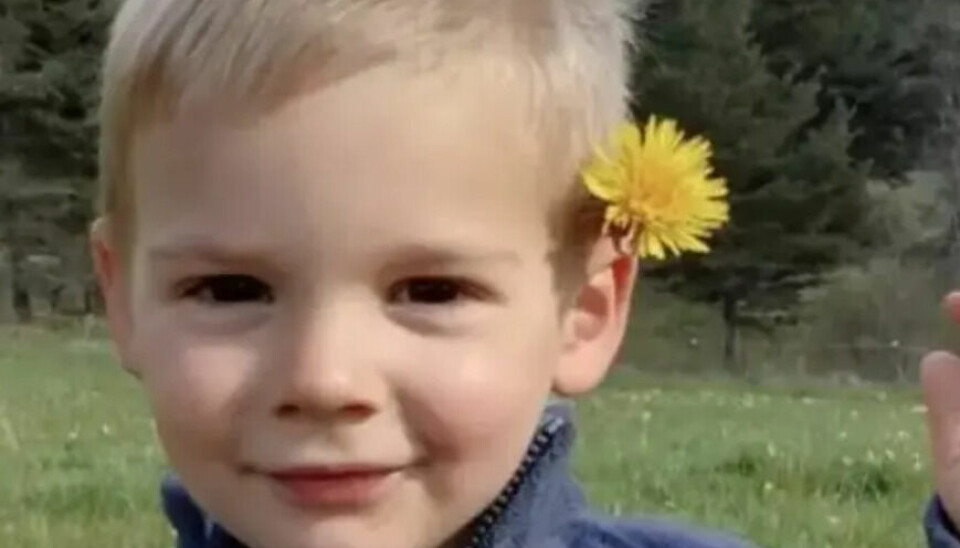New investigations are underway into the circumstances of the death of Emile Soleil - who disappeared from an Alps hamlet in July - the public prosecutor of Aix-en-Provence has announced, after some of the toddler’s bones were found.
Jean-Luc Blachon held a press conference on April 2, three days after a hiker discovered bones around 1.6 km away (as the crow flies) from where Emile was last seen in the hamlet of Le Haut-Vernet (Alpes-de-Haute-Provence).
DNA testing quickly confirmed that they belong to the boy.
The bones were found on March 30 in a remote-but-popular hiking area at an intersection with several hiking paths that had already been extensively searched. Searches for Emile had included human patrols, sniffer dogs, and drones.
The discovery has meant new questions and other discoveries have come to light.
Read more: Bones found of Emile, 2: What French police say and what happens now
What is the latest on the bone analysis?
The hiker found the skull and teeth between the hours of 12:00 and 14:00, and took them to a local police station. It was previously reported that several other bones had been found but this has now been revealed as incorrect.
The hiker has also said that she was unable to call police from the location itself as she did not have any phone signal.
While police have said that they would have preferred that she had left the bones in place without touching them - reporting the position only - they were able to expedite DNA testing to determine that the remains belonged to Emile. The hiker appears not to have contaminated the evidence at the site, investigators said.
Soil analysis is now underway in a bid to determine how long the skull had been there. No other bones have yet been discovered.
Mr Blachon said that "post-mortem cracks", "small fractures" and "bite marks" had been found on Emile’s skull, which were "probably caused by one or more animals".
He added that "a jawbone is missing, but it is not known whether it came off naturally or as a result of being pulled off”. "Analyses are continuing," he said.
Have the boy’s clothes been discovered?
Yes.
In the past two days, one of the investigators on the case - General Jacques Morel, a gendarmerie general and former head of the Versailles search unit - said that the team would be searching for extra clues, such as Emile’s clothing, as this could offer insight into how the boy ended up there.
He said: "If [Emile] got there by his own means, we should find some items of clothing, even if they are damaged or in tatters.”
At the time of his disappearance, Emile was wearing a yellow top, white shorts, and hiking boots. Some of these clothes - a T-shirt, shoes, and underwear - have now been found close to the skull location, spread out over around a dozen metres.
Has a cause of death been established?
No. However, the public prosecutor said that "no ante-mortem trauma was observed" on the skull. The damage found was only inflicted after death, possibly by an animal.
"These bones alone do not allow us to say what the cause of Emile's death was," said Mr Blachon. “Between a fall, manslaughter and murder, we cannot favour any hypothesis.”
Two days ago, gendarmerie spokeswoman Colonel Marie-Laure Pezant warned that determining the cause of death was not necessarily guaranteed from the bones alone. She said: "We are not certain of discovering the cause or circumstances of death.”
Gendarmes have described the area as "steep and difficult to access", “quite wild”, and made up of meadows and wooded spaces.
However, it is close to a popular hiking trail, and at the intersection of several footpaths.
“Emile could have got lost,” said Ms Pezant.
Mr Blachon said: “The area can be reached from the bottom of the village, on foot, in 25 minutes. There are no major difficulties apart from the fact that the terrain in the undergrowth is very steep on both sides.”
Was the body missed during searches?
One of the major points of focus is on why the bones were only found now despite being in an area that had already been extensively searched.
Ms Pezant has confirmed that the area where the bones were found had been carefully searched at the time of the boy’s disappearance. She also said that there was only "a very small chance" that the gendarmes could have missed the toddler’s body during previous searches, if it had been there.
She said investigations were now concentrating on different hypotheses, including:
How and why the body was missed during police searches, if it was
If the remains were moved or hidden due to severe weather conditions
If the bones were brought to the area afterwards, whether by a person or by an animal / animals
There is speculation that heavy rain or snowfall may have washed the bones to the discovery location. Some areas of Le Haut-Vernet were still covered in a light covering of snow at the end of March.
However, the public prosecutor appeared less certain.
He said: “Although the place where Emile's skull was found was indeed within the search perimeter in the early days, I cannot say today that every single square metre was searched by a member of the search team.
"During the second phase of the search, between July 23 and 25, 2023, drones and cadaver search dogs were used, and I can say with certainty that they did not cover the area in which Emile's bones were found on March 30.” He said the area was "very overgrown" in summer (when Emile disappeared), and that the high temperatures could - possibly - have affected the sniffer dog’s senses.
Laurent Fanton, Director of the Lyon Forensic Institute, told FranceInfo later that the body was (of course) “very small”, and that “small bones can mix with plants, especially in summer when the vegetation is dense”.
"We cannot confirm whether Emile's body was present in the discovery area [at the time of the searches],” said Mr Blachon.
What is next for investigators?
The prosecutor said that the investigation will be "long" and "complex", and “will continue with the same intensity, on the ground and from a forensic point of view”.
Leaving questions unanswered and unexamined is “not satisfactory for anyone: not for the family, not for the investigators, and not for the magistrates", he said.

























